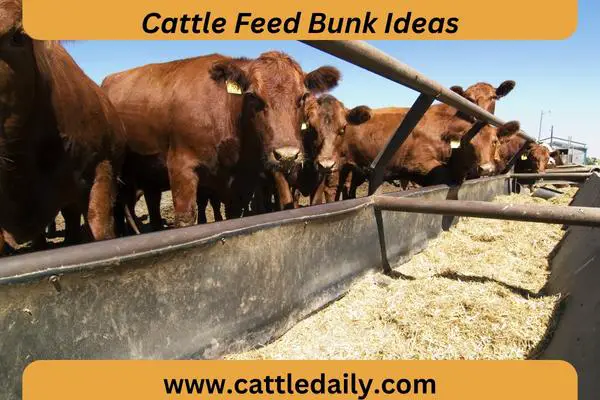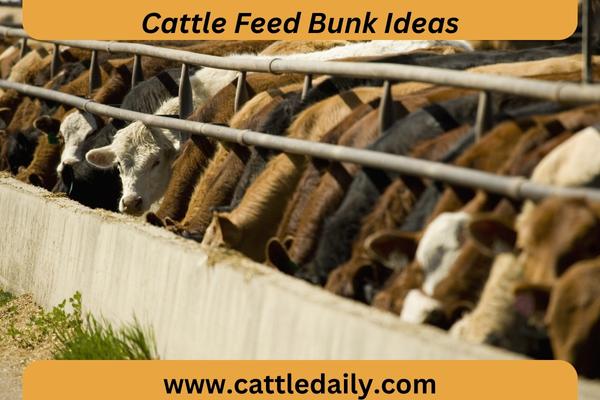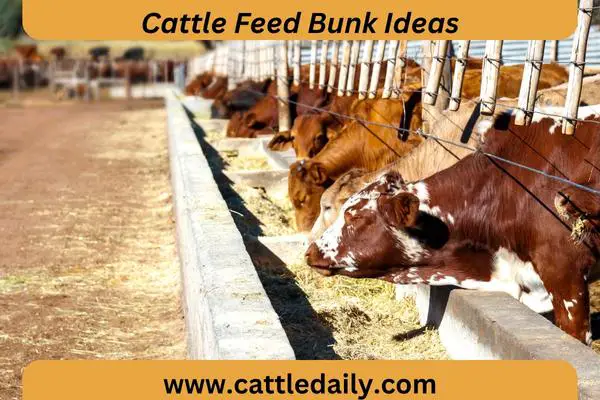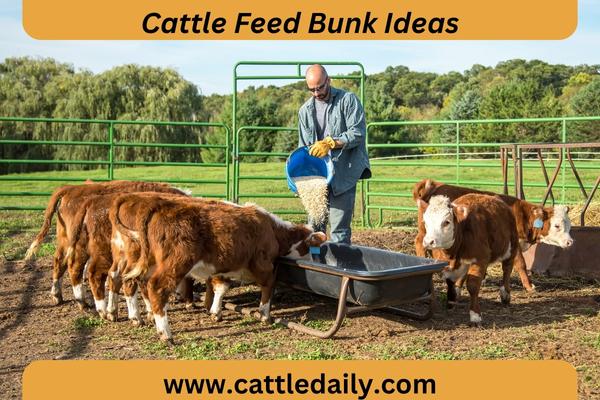Cattle Feed Bunk Ideas
Feeding cattle is one of the most significant expenses for cattle operations, accounting for over half of total production costs. With feed prices fluctuating and profit margins tight, optimizing feed efficiency is crucial for the financial viability of cattle farms.
Feed bunk management is an often overlooked area where cattle producers can gain an advantage. Strategically designing and managing your cattle feed bunks can lead to less feed wastage, improved animal performance, and bottom-line profitability.
In this blog article, we will discuss eleven cattle feed bunk ideas and strategies to reduce wasted feed, prevent feed contamination, and support optimal feed intake for your herd.
Benefits of Proper Feed Bunk Management
Here are some of the key benefits cattle producers can gain from well-managed feed bunks:
-
Reduce Feed Wastage
Feed that ends up trampled into the ground, uneaten, or spoiled is wasted money. Proper feed bunk design and management can dramatically cut feed losses. Studies show that improved practices reduce feed wastage rates from 6-12% to just 1-2%.
-
Increased Feed Efficiency
With less feed being wasted, the feed conversion ratio improves. More of the feed you purchase ends up as gain on cattle, converting to profits.
-
Consistent Nutrition
Cattle perform best when intake is steady. Well-managed bunks prevent feast/famine fluctuations in accessibility and quality of feed. This supports uniform growth and performance.
-
Lower Feed Costs
When feed wastage is minimized, you reduce the amount of feed that needs to be purchased. Combine this with improved feed efficiency, and cost of gain goes down.
-
Prevent Feed Contamination
Feed bunks allow cattle access to feed while keeping it isolated from threats of weather, pests, and contamination from mud/manure. This preserves feed quality.
-
Optimal Feed Consumption
With sufficient bunk space and access, all animals can eat adequate amounts without competition. This prevents under- or over-consumption by individual animals.
-
Increased Average Daily Gain
Research shows that feed bunk management improvements increase cattle weight gain by 0.2 to 0.5 lbs per day. This gets cattle to target market weights sooner.
-
Improved Herd Health
Contaminated or improperly balanced feed leads to health issues in cattle. Effective feed bunk strategies minimize risks and support wellness.
-
Lower Labor Requirements
Feed bunks designed to hold adequate feed and resist spillage cut down on time spent each day refilling and cleaning around bunks. Better utilization also means fewer deliveries.
-
Reduced Nutrient Run-Off
Feed spilled on the ground increases nutrient loading and environmental impacts. Containing feed in properly designed bunks prevents pollution.
-
Higher Profits
With lower costs, reduced expenses, and faster gains, optimizing your feed bunks pays dividends to your bottom line.

Key Factors in Cattle Feed Bunk Design
Keep these essential factors in mind when planning cattle feed bunk infrastructure:
1. Bunk Space Per Head
Provide at least 18 to 24 linear inches of bunk space per head to prevent overcrowding and allow all-animal access. Up to 30 inches is ideal. For young calves, design for at least 12 inches per head.
2. Bunk Dimensions
Standard feed bunks are 10 to 12 feet long and 20 to 24 inches deep. Adjust dimensions as needed to accommodate your herd size while maintaining accessibility.
3. Bunk Height
For mature cattle, 30 to 36 inches is optimal. This allows easy access and visibility of feed. Raise heights for younger animals as they grow.
4. Bunk Flooring
Concrete bunk flooring prevents feed from being trampled into muddy ground. Textured floors provide grip. Slope floors slightly away from feed to allow drainage without feed buildup.
5. Bunk Covers
Covering feed bunks prevents rain from saturating feed. Design covers with adequate height clearance so cattle can easily access feed.
6. Drainage
Proper drainage around feed bunks keeps the area dry. Install trenches, pipes and grates to divert stormwater away from feed. Slope the ground away from the bunk.
7. Feed Rails
Install an barrier to prevent cattle from walking into the bunk. Feed rails keep feed clean and signal where animals should stand to eat.
8. Water Access
Provide ample water sources adjacent to feed for hydration. Cattle consume more feed when water is easily available.

11 Cattle Feed Bunk Management Strategies
Proper cattle feed bunk management is just as crucial as bunk design for reducing waste and optimizing feed efficiency. Consider these key strategies:
-
Provide Sufficient Bunk Space
Ensuring adequate linear inches of bunk space per head prevents crowding and ensures all cattle can access feed. Target 18-30 inches of bunk space per animal.
-
Maintain Clean Bunks
Remove any spoiled, contaminated or unconsumed feed daily to maintain freshness. Keep the areas around the bunk tidy.
-
Use Bunk Dividers
Install vertical or angled dividers in long bunks every 6-8 feet. This creates segments and prevents cattle from crowding at feed.
-
Ration Feed Levels
Keep depth of feed in bunks consistent at around 6 inches deep. Refill in frequent, small batches to maintain this level versus large, infrequent loads.
-
Assign Feed Times
Feed cattle at the same times daily to train them on a schedule. This minimizes frenzied feeding. Consider 2-5 feedings per day.
-
Group Cattle by Size/Age
Avoid competitive behaviors and allow equal feeding opportunities by grouping cattle with similar weights/ages.
-
Monitor Consumption
Track how much feed disappears daily to gauge appetite and fine-tune ration amounts. Target just trace amounts left before next feeding.
-
Inspect Bunks Frequently
Walk feed bunks several times daily to check for stale feed, consistency of ration levels, and cleanliness. Address any issues immediately.
-
Remove Stale Feed
Eliminate uneaten feed that is more than 12 hours old to prevent spoilage. Either dispose of it or feed it to another species.
-
Store Feed Properly
Keep additional feed in protected storage areas away from weather, vermin, and contamination. Use feed soon after delivery for freshness.
-
Adjust Rations Periodically
As cattle age and increase size, re-calculate needed feed amounts and nutritional requirements. Increase or change rations accordingly.

Special Considerations by Cattle Class
Tailor feed bunk plans and management practices to optimize utilization based on the type of cattle:
Beef Calves
- Focus on quality colostrum and transition milk right after birth.
- Provide calf-sized, sheltered individual pens with narrow bunks.
- Feed smaller, more frequent meals of high protein feed for growth.
- Ensure bunks have adventure teats/nipples for younger calves.
- Mix in texturized starter feed when rumination begins around 8 weeks.
Stocker Cattle
- Design feed bunks to easily adjust height as cattle grow.
- Feed high roughage grower rations to develop rumen capacity.
- Prevent acidosis with proper bunk management when transitioning rations.
- Ensure abundant feed during high-stress periods like weaning or transport.
Beef Finishing Cattle
- The transition from grower to high-energy finishing rations gradually.
- Use bunk dividers to prevent boss cows from overconsuming.
- Add trough space as animals increase size towards finish weight.
- Manage acidosis risk when introducing high-grain finishing diets.
- Increase feeding frequency as cattle reach slaughter weights.
Beef Cows
- Require sufficient access during high-demand times like late gestation/early lactation.
- Ensure adequate functional bunk space for mature animals.
- Group first-calf heifers separately with appropriate bunk design.
- Adjust ration protein and energy levels based on the production stage.
- Prevent acidosis when feeding high grain rations prior to breeding.
Dairy Cattle
- Design feed alleys and access patterns to support frequent daily feeding.
- Require higher feeding frequency – aim for consistent food availability.
- Accommodate specialized needs like post-milking rations.
- Adjust feeding patterns and bunk access around milking schedules.
- Provide sufficient bunk space to support high energy demand.
Optimizing your cattle feeding operation starts with well-designed, properly managed feed bunks. Producers can reduce wasted feed, improve efficiency, and maximize profitability by providing ample spacing, rationing feed appropriately, and following sound bunk management practices.
Consider the ideas presented for designing durable, accessible feed bunks tailored to your specific cattle class and herd size. Then, develop stringent protocols for hygiene, feeding schedules, ration adjustments, and record keeping.
By training staff on proper feed bunk strategies, implementing the recommendations above, and continually monitoring utilization, you can minimize costs associated with wasted feed. This allows you to direct more of your feed budget towards productive gain on cattle.


